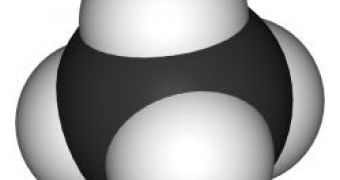Several years ago, dozens of nuclear experiments involving highly spinning nuclei have led to puzzling results, which no one really knows how to interpret. The experiments were conducted with a variety of detectors, energies, and colliding nuclear species.
Now, Jerzy Dudek of the Universit? Louis Pasteur in Strasbourg, France, and his colleagues at Warsaw University and the Universidad Autonoma de Madrid came up with an idea that might solve the mystery. They speculate that some nuclei, created during high energy collisions, take the form of a tetrahedron or an octahedron.
Such a nuclear pyramid - which would be the smallest pyramid in the world - is thought to be formed from protons and neutrons held together by the strong nuclear force. The side of such a pyramid would be of only a few femtometers (a millionth millionth of a millimeter).
In order for such a nucleus to be stable, it would have to have a certain number of protons and neutrons. Dudek says that gadolinium-156 and ytterbium-160 would probably be such nuclei. By "stable", nuclear physicists mean something that persists for about a hundred millionth of a second - a number considerably larger than the typical timescale for nuclear reactions. Dudek said that there might also be some octahedral nuclei (i.e. diamond shaped).
Such nuclei would possess quantum properties that would set them apart from other more regular nuclei. In particular, they would have different decay rules which could explain the puzzling results of earlier experiments. Dudek and his colleagues plan several experiments to test their ideas.

 14 DAY TRIAL //
14 DAY TRIAL //